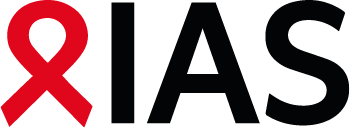Share Abstract
Characterization of anti-gp41 antibodies eliciting viral neutralization and protecting against CD4 depletion in long-term non-progressors
Abstract Content:
Background: We previously showed that antibodies (Ab), which recognized a highly
conserved motif of the gp41, called 3S, are protective against CD4+
T cell depletion. This was analyzed after immunization in a model of
SHIV162P3-infected macaques, and naturally in asymptomatic long-term
non-progressor (ALT) patients. More recently, we have detected the presence of
anti-3S/W614A Ab, which recognized a point-modified form of 3S, in less than 5%
of HIV-1 progressor patients. These Ab remain able to protect CD4+ T
cells but have also acquired the capacity to elicit viral neutralization. Here,
we quantified and characterized these anti-3S W614A Ab in non-treated patients
from the French ANRS ALT cohort.
Methods: 64 HIV-1 untreated ALT patients who had enrolled with >600 CD4+ cells /mm3 (for at least 8 years), were followed-up each year during the first 3 years to evaluate anti-3S-W614A Ab. Ab level was measured by ELISA, and its presence was correlated with different biological parameters (CD4 count, CD4/CD8 ratio, viral DNA, viral load, ?). Viral neutralization was performed against a panel of tiers 1 and 2 viruses, using the standard TzM-bl assay.
Results: 25.7 % of patients had detectable anti-3S/W614A Ab at the enrollment period. The presence of these Ab is highly significantly correlated with an increased of the CD4/CD8 T cell ratio (p=0.006), and both decreased of the viral load (p< 0.0001) and viral DNA (p=0.0003). In the same subjects, measured again at 24-36 months following inclusion in the cohort, we observed that subjects with persistently specific Ab still had both significantly lower viral DNA and viral load, as compared to patients without anti-3S/W614A Ab. Importantly; we also report that the efficacy of viral neutralization mediated by anti-3S/W614A Ab, is time-dependent, increasing during the follow-up in term of breadth and potency.
Conclusions: The presence of anti-3S W614A Ab appears to confer crucial advantage in asymptomatic long-term non-progressor HIV-1 patients. These results bring new insights for both pathophysiological research and development of new vaccine strategy.
Methods: 64 HIV-1 untreated ALT patients who had enrolled with >600 CD4+ cells /mm3 (for at least 8 years), were followed-up each year during the first 3 years to evaluate anti-3S-W614A Ab. Ab level was measured by ELISA, and its presence was correlated with different biological parameters (CD4 count, CD4/CD8 ratio, viral DNA, viral load, ?). Viral neutralization was performed against a panel of tiers 1 and 2 viruses, using the standard TzM-bl assay.
Results: 25.7 % of patients had detectable anti-3S/W614A Ab at the enrollment period. The presence of these Ab is highly significantly correlated with an increased of the CD4/CD8 T cell ratio (p=0.006), and both decreased of the viral load (p< 0.0001) and viral DNA (p=0.0003). In the same subjects, measured again at 24-36 months following inclusion in the cohort, we observed that subjects with persistently specific Ab still had both significantly lower viral DNA and viral load, as compared to patients without anti-3S/W614A Ab. Importantly; we also report that the efficacy of viral neutralization mediated by anti-3S/W614A Ab, is time-dependent, increasing during the follow-up in term of breadth and potency.
Conclusions: The presence of anti-3S W614A Ab appears to confer crucial advantage in asymptomatic long-term non-progressor HIV-1 patients. These results bring new insights for both pathophysiological research and development of new vaccine strategy.
